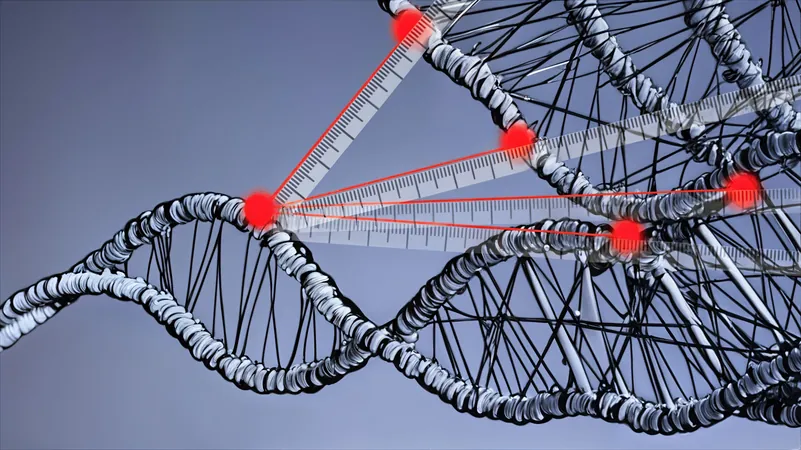
Unlocking the Mysteries of DNA: How Generative AI is Revolutionizing Genetic Medicine
2025-06-04
Author: Yu
A Breakthrough in Genetic Medicine
Researchers at Skoltech have harnessed the power of generative artificial intelligence to uncover previously missing data on the distances between gene pairs in DNA. This groundbreaking achievement sheds light on the 3D architecture of DNA molecules, a crucial step toward developing effective treatments and diagnostic tools for genetic disorders.
The Challenge of Incomplete Data
Traditionally, scientists have struggled with incomplete data, which has hindered advancements in medical genetics and limited their understanding of the biophysics of chromatin—what makes up our chromosomes. Understanding DNA's 3D architecture is pivotal as it determines gene activity and influences cell reproduction and differentiation during embryonic development. Misconfigurations in this architecture can lead to severe abnormalities and conditions like cancer.
A New Vision for DNA Structure
The study, recently published in *Scientific Reports*, marks a pioneering effort to utilize AI for this purpose, a feat yet to be accomplished by any means. By grasping the physical principles that stabilize a 'healthy' DNA architecture, researchers have opened avenues for diagnosing and treating genetic conditions.
Transforming Microscopy Techniques
Fluorescence microscopy, a widely used method for visualizing how DNA is folded, involves tagging specific gene sequences with fluorescent markers. However, this technique has faced limitations due to its fragmentary nature—certain sequences can't be selectively stained, particularly those with repeated nucleobases. This often left researchers with gaps in data. But now, thanks to AI, those gaps may finally be filled.
Mathematical Solutions Through AI
According to Assistant Professor Kirill Polovnikov, the lead investigator of the study, "Once you know the distances between a sufficient number of genes, determining the remaining distances becomes a mathematical problem with a distinct solution." The study reveals that generative models can successfully tackle these challenges—an unconventional yet revolutionary application of AI typically used for creative tasks like generating images and text.
What This Means for the Future
The implications are significant: the Skoltech team has not only refined the methodology for processing fluorescent microscopy data but has also paved the way for deeper insights into the spatial organization of DNA. This could lead to groundbreaking advancements in treatments and diagnostics for genetic diseases.
Generative AI: Beyond Creative Tasks
Fundamentally, this research highlights the vast potential of generative artificial intelligence beyond its conventional uses, suggesting a new era in the study of chromatin structure and genetic medicine.

 Brasil (PT)
Brasil (PT)
 Canada (EN)
Canada (EN)
 Chile (ES)
Chile (ES)
 Česko (CS)
Česko (CS)
 대한민국 (KO)
대한민국 (KO)
 España (ES)
España (ES)
 France (FR)
France (FR)
 Hong Kong (EN)
Hong Kong (EN)
 Italia (IT)
Italia (IT)
 日本 (JA)
日本 (JA)
 Magyarország (HU)
Magyarország (HU)
 Norge (NO)
Norge (NO)
 Polska (PL)
Polska (PL)
 Schweiz (DE)
Schweiz (DE)
 Singapore (EN)
Singapore (EN)
 Sverige (SV)
Sverige (SV)
 Suomi (FI)
Suomi (FI)
 Türkiye (TR)
Türkiye (TR)
 الإمارات العربية المتحدة (AR)
الإمارات العربية المتحدة (AR)